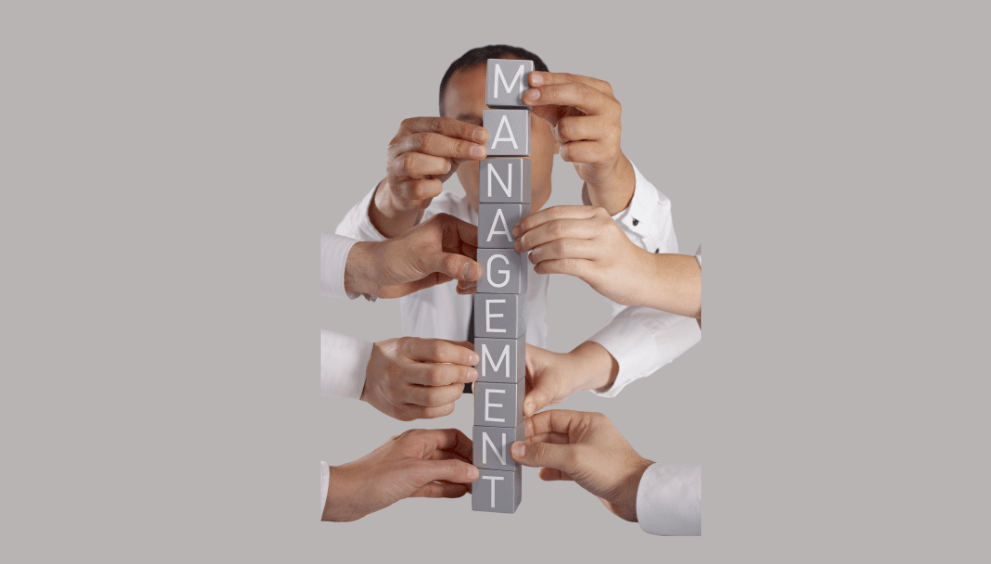What is Human Resource Development (HRD)
Human Resource Development (HRD) is a multidisciplinary field focused on enhancing the skills, knowledge, and abilities of individuals and organizations. It encompasses training, education, and career development initiatives to improve performance, productivity, and overall human capital.
The concept of HRD was initially introduced by Leonard Nadler in 1969 during a conference in the United States. He defined HRD as organized learning experiences with specific durations aimed at facilitating behavioural change.
There are many definitions of human resource development but according to M.M. Khan, “Human resource development is the across of increasing knowledge, capabilities and positive work attitudes of all people working at all levels in a business undertaking.
Above is a brief overview to understand what is HRD. If you are looking for a Human Resource Development PDF or Human Resource Development Notes, this article will provide valuable insights.
For a more detailed understanding of HRD, please continue reading below.
Table of Contents
1.Human Resource Development(HRD) in India
Above, we learned about the initial introduction of HRD. Now understand what is HRD in India, to delve into the evolution of HRD in India, it’s essential to explore the contributions of two pioneers Dr. Udai Pareek and Dr. T. V. Rao, who played crucial roles in shaping HRD practices in India.
Do you know who is father of HRD in India? Then you need to understand HRD in India.
Dr. Udai Pareek and T.V. Rao hold the esteemed title of “Fathers of HRD in India.” Their pivotal role included shaping the HRD concept and establishing India’s inaugural HRD department at Larsen & Toubro (L&T) during the mid-1970s.
Human Resource Development (HRD) in India has evolved significantly over the years. Initially focused on training, it expanded to encompass skill development, career planning, and organizational growth. Pioneers like Dr. Udai Pareek and Dr. T.V. Rao played vital roles in shaping HRD into a holistic approach that fosters individual and organizational success.
2. Objective of HRD
The main objective of Human Resource Development (HRD) is to bring out the hidden potential of an employee and help them develop as an individual. Here are some common objectives of HRD in India.
- Enhancing employee productivity and performance.
- Developing employee skills and knowledge for changing organizational needs.
- Supporting career growth and opportunities.
- Cultivating a positive learning-oriented workplace.
- Aligning employee goals with organizational objectives.
3. Scope of HRD
The scope of human resource development (HRD) is broad and encompasses a wide range of activities. Some of the key areas of HRD include:
i. Training and Development(T&D)
This entails equipping employees with the necessary competencies and knowledge to excel in their roles. Training methods may include in-person classroom sessions, online modules, and hands-on on-the-job training.
ii. Leadership development
This focuses on assisting employees in acquiring the essential skills and knowledge to become proficient leaders. Such programs cover areas like strategic thinking, team cohesion, and conflict resolution to foster effective leadership.
iii. Career development
This means aiding employees in discovering their career aspirations and crafting a roadmap to realize them. Programs may comprise career counselling, job exposure, and mentorship to facilitate this journey.
iv. Organization development
This means assisting the entire organization in becoming more efficient. Programs may involve activities like team building, managing change, and enhancing overall performance.
v. Employee Appraisal
HRD focuses on enhancing the skills of employees in various roles. It’s crucial for assessing how well employees in critical areas like production, finance, and marketing are doing their jobs.
4. Importance of Human Resource Development
The importance of Human Resource Development (HRD) lies in its role of nurturing a skilled, adaptable, and motivated workforce. It enhances employee performance, job satisfaction, and overall organizational effectiveness.
- HRD enhances employee skills, knowledge, and abilities, boosting performance and productivity.
- It cultivates a positive work atmosphere, encouraging ongoing learning and growth.
- HRD aligns employee goals with organizational objectives.
- It retains talent through career development opportunities.
- HRD builds a capable workforce adaptable to evolving organizational needs.
5. Features of Human Resource Development
Key features of Human Resource Development (HRD) include skills enhancement, career development, and aligning individual goals with organizational objectives. HRD fosters a learning culture, retains talent, and ensures a skilled workforce adaptable to changing organizational needs.
- HRD focuses on continuous employee development within the organization.
- It follows a systematic approach to identify training and development requirements.
- HRD is a collaborative process involving both employees and the organization to achieve shared objectives.
- Methods like training, mentoring, coaching, job rotation, and career development are integral to HRD.
6. Benefits of HRD
The benefits of human resource development (HRD) are numerous. It helps organizations reach their goals by creating a skilled, productive, and motivated workforce.
i. Boosted productivity and performance
HRD empowers employees with the skills and knowledge required for better job performance, resulting in enhanced productivity and overall organizational success.
ii. Greater employee engagement and motivation
HRD can make employees feel more involved and motivated in their jobs, creating a happier workplace and boosting employee morale.
iv. Lower employee turnover
HRD helps employees build skills, making them more valuable to the organization and less likely to seek other job opportunities, ultimately reducing turnover.
v. Increased job satisfaction
HRD can make employees happier with their work, creating a better workplace and boosting employee productivity.
vi.Greater employee loyalty
HRD can foster stronger attachment between employees and the organization, resulting in a more dependable workforce and better employee retention.
7. HRD Process
The Human Resource Development (HRD) process is a structured way to develop employees and elevate organizations. It commonly includes these steps:
i. Needs assessment
In the HRD process, the first thing is to see what the organization and employees require. It means finding out what skills and knowledge employees need to do their jobs well and help the organization succeed.
ii. Goal setting
After figuring out what the organization and employees need, the next step is to set clear goals for HRD. These goals should be specific, easy to measure, possible to achieve, relevant to the situation, and have a timeframe.
iii. Program development
After setting HRD goals, the next thing is to create programs to reach those goals. This means figuring out the right training and development methods to use and gathering the things we need to make the programs happen.
iv. Program implementation
Now it’s time to make the HRD programs happen. This could mean running training sessions, giving coaching and guidance, or giving employees chances to learn while working.
v. Evaluation
The last part of the HRD process is to see if the programs worked. We look at how much progress employees made in reaching their learning goals and how the programs affected the organization’s goals.
8. Different types of HRD
There are several types of HRD (Human Resource Development) approaches, including formal training, on-the-job learning, Job shadowing, Professional development and Compliance training. Each method serves to enhance employee skills and knowledge, contributing to organizational growth and success.
i. On-Job Training
On-the-job training is when you learn about your job while doing it. You might already know the basics, but you get more details on things like using forms, storing stuff, and using computers.
ii. Job shadowing
Job shadowing means watching and learning from a skilled colleague. It’s a great way to pick up skills and tricks from experienced people. You can ask questions and get answers right away.
iii. Professional development
This means getting smarter or better at your job. It could be college classes, job training, or seminars. Companies spend a lot on this to make employees better. You can learn online or in person at events like seminars and conferences, and many people like doing it.
iv. Compliance training
Compliance training makes sure employees know the rules, like laws and company policies, and why they should follow them.
9. Difference between HRM and HRD
There are many differences between HRM and HRD, here are a few given below.
Purpose: HRD primarily educates employees, easing onboarding. HRM maintains organizational functions, handling compensation, records, and benefits.
Independence: HRM is its unit, while HRD engages multiple departments for holistic employee training.
Motivation: HRM boosts productivity with incentives like higher pay. HRD motivates employees through professional growth and personal achievement.
In conclusion, you may understand what is Human Resource Development(HRD), HRD is not just a department or a process within an organization; it’s a philosophy that values the development and growth of employees. It recognizes that an organization’s success is intrinsically tied to the skills, knowledge, and abilities of its workforce. By fostering a culture of learning, aligning goals, and providing development opportunities, HRD contributes significantly to an organization’s journey towards excellence.
FAQs
What do you mean by HRD?
HRD, or Human Resource Development, is about improving employee skills and knowledge to enhance performance and align individual goals with organizational objectives.
What is HRD and its importance?
Human Resource Development(HRD), focuses on improving employee skills and aligning their goals with the organization’s, contributing to enhanced performance and overall success.
What is the full form of HRDM?
The full form of HRDM is “Human Resource Development and Management.” It encompasses the development and management of an organization’s workforce.
What is the HRD process?
HRD process involves: 1. Needs assessment, 2. Goal setting, 3. Program development, 4. Program implementation, 5. Evaluation to enhance employee skills and align them with organizational goals.
What are the different types of HRD?
Types of HRD include formal training, on-the-job learning, mentoring, coaching, and e-learning. These methods enhance employee skills and contribute to organizational growth.
How to get Human Resource Development Notes?
HRscholar.in offers complimentary Human Resource Development Notes, along with a wide array of other essential study materials for various exam preparations.


 WhatsApp Channel
WhatsApp Channel 














